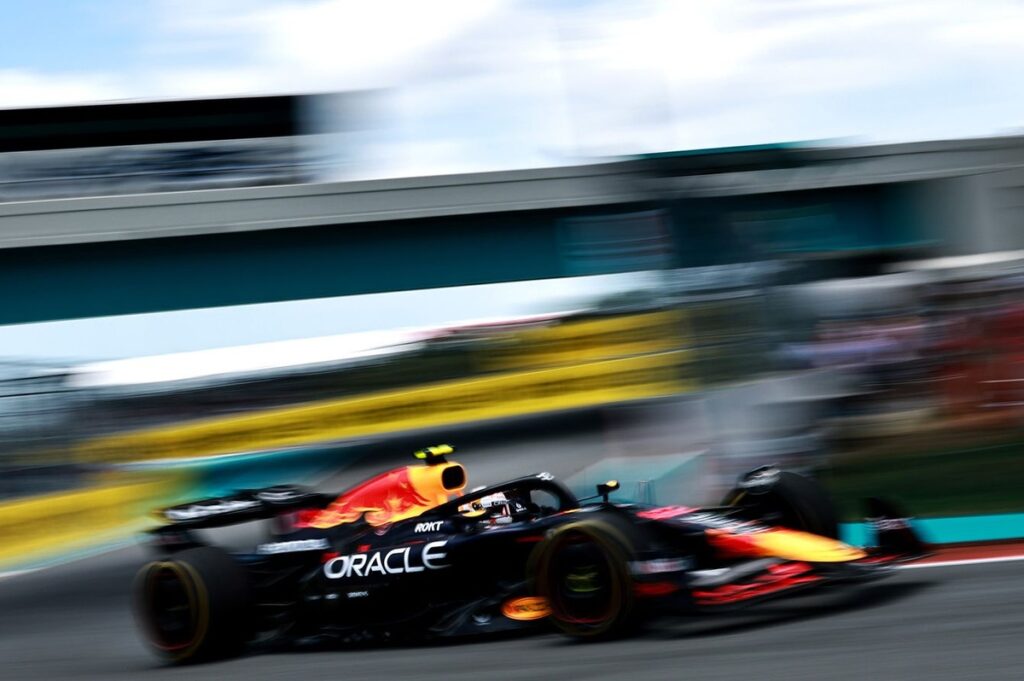Red Bull team principal Christian Horner believes a proposal to change the energy deployment of Formula 1’s 2026 powertrains is “worth consideration”, warning of excessive lift and coast at certain races next year.
Horner’s comments follow the F1 Commission meeting, where the teams met with the FIA and FOM last week to help plot the future direction of the championship, with discussions on how best to navigate some of the perceived issues thrown up by the incoming 2026 rules.
When teams first started to look at the rules in their simulators, there was a concern that with the increased reliance on electrical components, drivers would not be able to regenerate enough energy through a lap and would be forced to lift and coast into some of the slower corners.
It was believed that this would dissipate with development, but Horner said that a solution had not been particularly forthcoming and added that the other manufacturers had agreed – although Mercedes chief Toto Wolff had stated previously that any reduction in energy deployment would be “a joke”.
Thus, the FIA has tabled a suggestion of tweaking the energy deployment, considering either a lower power band for races or a more progressive ramp-up in available energy under acceleration to ensure the batteries are not emptied too soon.
“There’s the question of tidying up the current regulations,” Horner told Sky. “And what the FIA have put on the table, I think they finally had a good look at these regs.
“They’re seeing that next year there could be a huge amount of lift-and-coasting during the course of a grand prix, and that’s going to drive the drivers mad.
Christian Horner, Red Bull Racing
Photo by: Sam Bagnall / Motorsport Images
“The car’s obviously going to have DRS open at all times, so there’s going to be not the overtaking effect that you would see. And so they tabled a proposal where we’d leave all the technical specifications the same, but we would just reduce the battery energy in the race so that you effectively have a push-to-pass.
“I think it has merit, and I think in the bigger picture of Formula One, I think it’s definitely worth consideration. It doesn’t change the spec, it doesn’t change the maximum power of these engines, it’s just when the deployment is.”
The 2026 regulations already state that an effective push-to-pass system, named “manual override mode”, will act as a DRS substitute to allow drivers close to another to access more power – so, presumably, Horner is suggesting that the top-end power level may increase if the overall race power figures are reduced.
Failing to address the situation, according to Horner, would lead to lift-and-coasting – even on qualifying laps – to ensure the cars have the right level of power for longer.
“You need a super majority* [to change the rules], but I think sometimes you’ve got to look at the interest of the sport. And I think that we all believe that we’ve got good power units for next year.
“I think that what we just want to avoid is we’re going to have lift-and-coasting in qualifying at some races next year.
“To have it to such a degree in the race, particularly at certain circuits, it will be particularly bad. I think it’s well worth a look at because for sure it’s going to be a factor.
“And without, effectively, DRS being available next year, with very low downforce on the straights as we’re trying to recharge these batteries, would it be a bad thing to have a push-to-pass?
“We had these discussions two years ago. In fact, in fairness to the other manufacturers, they were in agreement that it’s just too much to recover.”
*A ‘super majority’ for regulatory changes is a majority of 28 votes. Delegates from F1 and the FIA get 10 votes each, while each team has a vote each.
In this article
Jake Boxall-Legge
Formula 1
Red Bull Racing
Be the first to know and subscribe for real-time news email updates on these topics
Subscribe to news alerts
Read the full article here

